News
Scubaverse Underwater Photographer Interview: Susannah H. Snowden-Smith
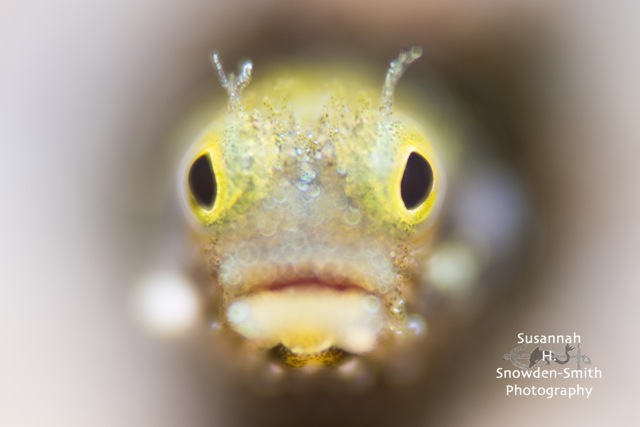
In an ongoing series, Scubaverse.com’s Underwater Photography Editors Nick and Caroline Robertson-Brown talk to underwater photographers from around the world that they admire.
This interview is with US photographer Susannah H. Snowden-Smith.
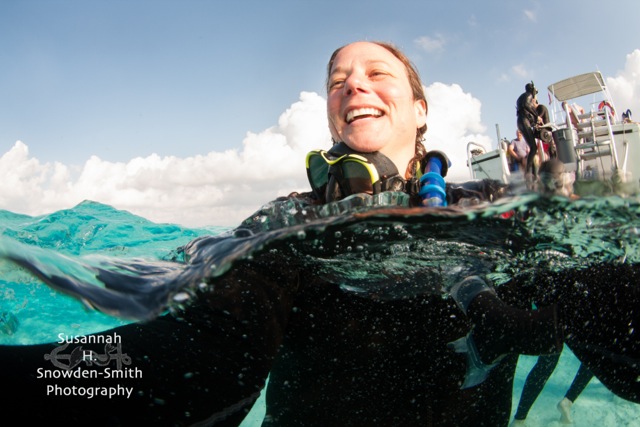
I’ve been diving for over 25 years, and photographing even longer. I started my professional photography career as a photojournalist. During my time at the newspaper I started photographing ancient shipwreck excavations part of the year. Combining my passions for diving and photography had always been the goal. With that in mind, three years ago, my husband and I moved to Grand Cayman so I could shoot underwater full-time.
My dad was an avid amateur photographer and I loved watching him shoot with his Olympus film camera. In my family, each of us got a camera when we turned ten. My sisters were all using 110 film cartridges in those skinny little cameras. But when the time came for me to get a camera of my own, I wanted “a camera like Dad has” and so my first camera was a 35mm, $35, point and shoot.
I worked as a photojournalist in the States for many years. In this work, I always sought out the unique angle, the interesting shot; my images were often referred to as “artistic”. I have taken this artistic approach with me to my underwater work (more on that in question 8, below). To date, I have photographed five underwater excavations all over the world. Since moving to Grand Cayman, I’ve expanded my underwater photography from specializing in underwater archaeology to include marine life, macro, fluorescence, modern wrecks, sharks, over-under shots…I love it all, and love shooting it all! I sell my underwater fine art photographs on Cayman and in the States.
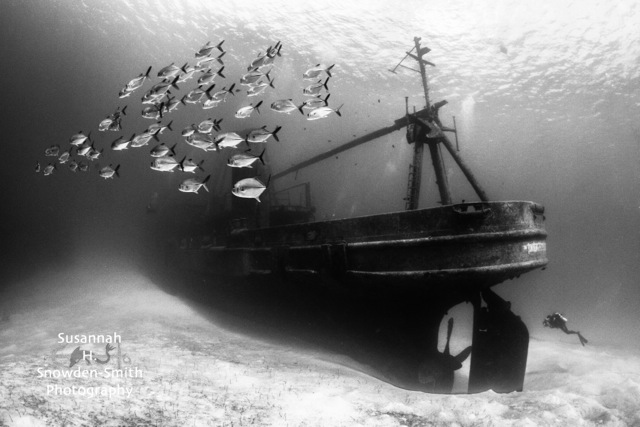
One of my proudest moments was having one of my underwater photographs from a 7th-Century BC Phoenician shipwreck displayed as part of an exhibit in the Metropolitan Museum Of Art. I also landed the cover of Archaeology Magazine (May-June 2016 issue).
I’ve placed in the Underwater Photographer Of The Year contest twice now (2016 and 2017). Seeing my Kittiwake photograph in newspapers around the world was a huge high! And I was “Wrecks Of The World” Champion for 2016: I worked really hard, shooting new images for the contest each month, so having all that hard work pay off was extremely gratifying. I also won all six places in the Scubashooters “Half & Half” contest last August. Split shots are one of my favourite types of shooting, so again, to have these images recognized was really gratifying.
Cayman is my backyard, so I dive here when I’m not traveling. I’ve dived and photographed in Sri Lanka, the Mediterranean, the Red Sea, the Maldives, Rhode Island, Thailand, the Bahamas… But I have so many more places I want to shoot!
You can find out more about my work at www.SusannahPhotography.com. Follow me on Instagram: SusannahPhotography and on Facebook: Susannah H. Snowden-Smith Photography.
N/C: How did your underwater photography start?
S H. S-S: My first underwater camera was a Sea&Sea Motormarine 35 when I was about 12. I’d saved up all my money for it! I took photographs in the local pool, trying to get interesting shots; this involved a lot of photographs of orange golf balls. Thinking back, I guess liked the contrast against the blue pool water. (My mom was not as impressed with the film processing costs and I soon took over paying for them 😉
Around that same time, in 6th-grade, we studied a small segment on underwater archaeology. I was fascinated and set a goal of working in underwater archaeology! I’ve since been the underwater photographer on five shipwreck excavations, from 7th C. Phoenician to 18th C. Ottoman. From underwater archaeology I’ve expanded into photographing marine life, macro, fluorescence, modern wrecks, sharks, over-under shots… I’m loving shooting everything from hammerhead sharks down to dwarf frogfish.
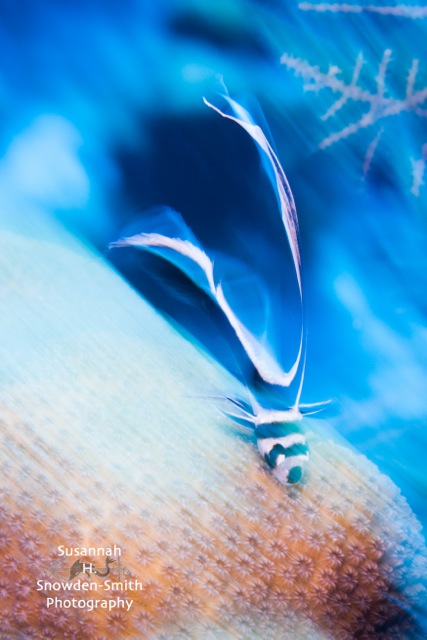
N/C: What is your favourite u/w camera equipment (past & present) & why?
S H. S-S: My Subal D500 housing and Sea&Sea YS-250s are favourites. I love the way the Subal housing feels in my hand. It’s ergonomic, the buttons are where I expect them to be, and it’s rugged. My Sea&Sea YS-250 strobes give out a huge amount of light and the quick recycling is a huge asset.
I love shooting and experimenting with remote strobes. I also love my Nightsea fluorescence kit.
I had a Sea&Sea MDX40 housing that I used for many years. It was very good to me, enabling me to make many images I am proud of.
N/C: What would be your advice to anyone new to underwater photography?
S H. S-S: Stick with it! It’s not going to be instant gratification, and there is so much to learn. I like to tell my students: you’re going to take half of what you know about land photography and chuck it out the window! Underwater photography has a steep learning curve, but the rewards are huge!
N/C: What, or who, has been your single biggest inspiration for your underwater photography?
S H. S-S: Alex Mustard and his work have been a big inspiration for me. I admire his creativity and how he’s always pushing the envelope of ingenuity. I find daily inspriration on Wetpixel, Scubashooters, UWPhotographers and from the scores of underwater photographers who are in my Facebook feed.
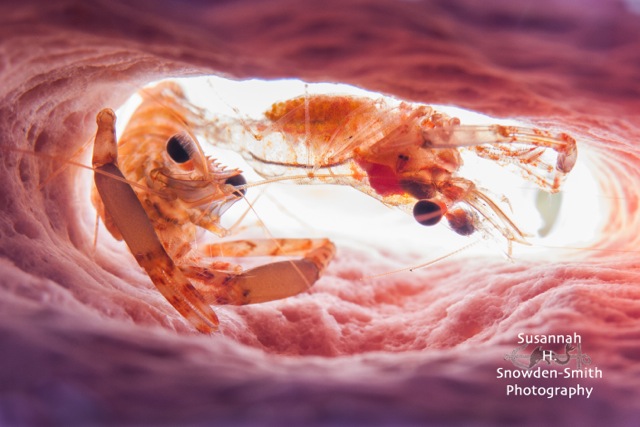
N/C: What image are you most proud of and why?
S H. S-S: That’s a hard one. I have photographs that mean a lot to me from different phases of my underwater photo career. I’ve included some of my favourite images for this article, but there are many more that I’m attached to.
N/C: Where is your favourite dive location, and is it for the photography?
S H. S-S: Photography and diving are inseparable for me: anywhere I love to dive, I love to photograph. I have so many favourite places, and so many more that I want to explore (see below). I love shooting in my Cayman backyard but I can’t wait to explore more of the world. I’m excited to get to SE Asia, hopefully soon, for the photo opportunities.
N/C: What are you views on marine life manipulation, moving subjects?
S H. S-S: I’ve been reading a lot about this recently. Horrifying!
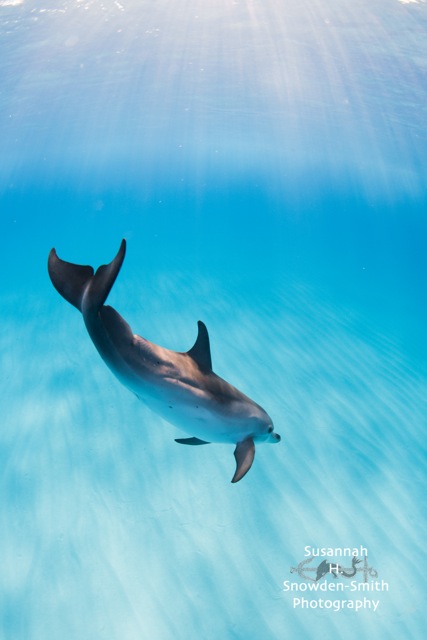
N/C: What do you look for when you are making your images?
S H. S-S: As noted above, I am always seeking out the unique angle or interesting way to shoot an image. When I was a photojournalist, I had to photograph the same events over and over again, e.g. the same parade each year. So the challenge was how to cover the same event but come back with fresh, different images each time. Newspaper readers who saw me shoot would joke that I could often be found climbing a tree, or lying on the ground in the middle of a parade. And it was true: I would do whatever it took in order to get the creative shot I had in my mind’s eye. I apply this same creative eye to my underwater work. I’m always asking myself, “how can I make this photo more interesting? How can I take a photo of this subject in a way that I’ve not conceived of before?”
For this, Cayman has been really good for me, pushing me forward in my work. Just like my time as a photojournalist, I’m often shooting the same subjects over and over, which forces me to try and look for a different, more creative image each time. It also means I can experiment to my heart’s content. So when I have with a new lighting technique I want to employ, I can try it out right away.
N/C: What motivates you to take u/w photos?
S H. S-S: A desire to produce creative and unique images. Pushing myself to always improve. Sharing the excitement of the underwater world.
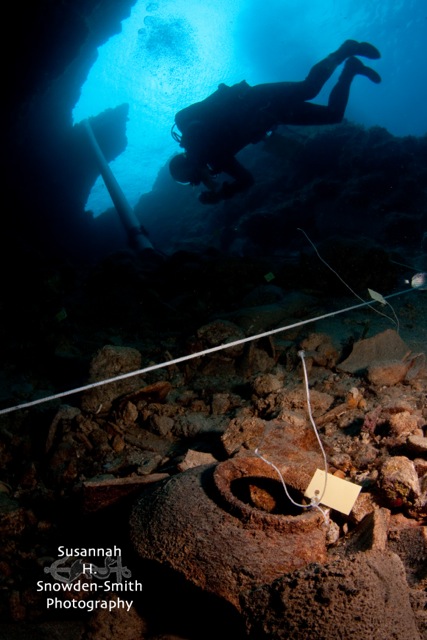
N/C: If you could photograph any one thing/place what or where would that be?
S H. S-S: I have many places and things I’d like to photograph, so narrowing that down to one is impossible. But in the immediate future, I’d like to dive and photograph the wrecks of Truk Lagoon, macro life in the Philippines and Indo, whales and whale sharks…! 😀 I’m looking forward to it all!!
Gear News
Introducing the TR-80, IR-50 and CS-30 Regulators from DYNAMICNORD

Whether you are a beginner or a professional diver – with the three new main regulators from DYNAMICNORD, everyone will find their favourite regulator. They all look super stylish.
Excellent performance with the TR-80
Quality and performance are the be-all and end-all for regulators. It is not for nothing that the TR stands for Tec Reg. The innovative design of the TR-80 guarantees absolute reliability – even in ice-cold waters.

Perfect breathing effort at 0.8 J/l / certified for diving in waters below 10 degrees / structural design made of solid brass for best cold protection / membrane-compensated design with dry seal of the first stage / reduced exhalation effort thanks to optimized exhalation membrane and bubble deflector / adjustable Venturi (dive/predive) and adjustment knob for individual inhalation comfort / innovative design of the front cover prevents free-flow in strong currents or when diving with scooters / design made of sandblasted brass, matt chrome finish / 2 HP and 4 LP outlets / mouthpiece made of high-quality, anti-allergic silicone for maximum comfort.


Amazing underwater adventures with the IR-50
The IR-50 is the top regulator for advanced and experienced divers. Natural breathing is the essence of this regulator.

Ideal breathing effort at 0.8 J/l /certified for diving in waters below 10 degrees / compensated membrane / adjustable venturi (dive/predive) and adjustment knob for individual inhalation comfort/ outlet valve and deflector for minimum exhalation effort and reduction of bubbles on the face / design made of sandblasted brass, matt chrome finish / 2 HP and 4 NP outlets / mouthpiece made of high-quality, anti-allergic silicone for maximum comfort.


The Workhorse – our CS-30
For diving centres and diving beginners – the workhorse stands for strong construction, reliability and robustness. Perfect for your training.

Optimal breathing effort at 0.8 J/l /recommended for diving in waters above 10 degrees / non-compensated piston / adjustable venturi (dive/predive) / outlet valve and deflector for minimum exhalation effort and reduction of bubbles on the face / design made of sandblasted brass, matt chrome finish / 1 HP and 3 NP outlets / mouthpiece made of high-quality, anti-allergic silicone for maximum comfort.


Octopus OP-30
The OP-30 is the ideal addition to all DYNAMICNORD regulators. It is identical in construction to the CS-30.

The TR-80, IR-50, CS-30 (DIN & INT) regulators and the Octopus OP-30 are available from DYNAMICNORD dealers and in the online store.
DYNAMICNORD – Your Outdoor Companion.
Marine Life & Conservation
Paul Watson Released as Denmark Blocks Japan’s Extradition Bid

Renowned anti-whaling activist Paul Watson has been released from custody in Greenland after spending five months in detention. Denmark’s Justice Ministry rejected Japan’s request for his extradition, citing insufficient guarantees that his time already served in custody would be credited against any potential sentence.
The 74-year-old Canadian-American was arrested on July 21 in Nuuk, Greenland’s capital, when his ship docked to refuel. His arrest was based on a 2012 Japanese warrant related to a 2010 encounter in Antarctic waters. Japan alleged Watson obstructed operations and caused damage to a whaling research ship during efforts to disrupt illegal whaling. Watson has consistently denied these claims, maintaining his commitment to marine conservation.
Denmark, which oversees extradition matters for Greenland, concluded that while the legal conditions for extradition were met, the lack of assurances from Japan regarding time-served credit made extradition untenable.
In a video shared by his foundation, Watson expressed gratitude and relief, saying, “After five months, it’s good to be out… and good to know they’re not sending me to Japan.” He added that the most difficult part of his time in custody was being separated from his two young sons.
Watson is a pioneering figure in marine conservation, known for founding the Captain Paul Watson Foundation in 2022 after decades of activism with the Sea Shepherd Conservation Society. His bold efforts to defend marine life have earned him widespread support, including from celebrities and conservationists. His work has also been featured in the acclaimed reality TV series Whale Wars.
Watson’s lawyer, Jonas Christoffersen, praised the decision, stating, “We are happy and relieved that Paul Watson is now free.” He added that Watson is eager to reunite with his family and continue his vital work.
The arrest occurred while Watson’s vessel, the M/Y John Paul DeJoria, was en route to the North Pacific with a team of 26 volunteers to intercept a Japanese whaling ship. His foundation described the arrest as politically motivated and emphasized that Watson’s actions were focused on ending illegal whaling practices.
Japan resumed commercial whaling in 2019 after leaving the International Whaling Commission, asserting that whale meat is a cultural tradition. Conservationists, however, continue to challenge these practices, highlighting their impact on marine ecosystems.
Despite the challenges, Watson remains steadfast in his mission to protect marine life and bring attention to whaling practices. His dedication to ocean conservation has made him a globally respected advocate for the environment.
-

 News2 months ago
News2 months agoIconic SS United States to become the World’s Largest Artificial Reef
-

 News3 months ago
News3 months agoBook Review – 52 Assignments: Underwater Photography
-

 Gear News3 months ago
Gear News3 months agoDYNAMICNORD – New German diving brand enters the British market
-

 News3 months ago
News3 months agoExploring Cenote El Pit: A Diver’s Dream
-

 Gear News3 months ago
Gear News3 months agoTry BARE drysuits (and maybe even win one!) this Friday with Sea & Sea at North West Dive Fest
-

 Marine Life & Conservation3 months ago
Marine Life & Conservation3 months agoBook Review: Coral Triangle Cameos
-

 Blogs2 months ago
Blogs2 months agoDive the Egyptian Red Sea this Autumn with Regaldive
-

 News3 months ago
News3 months ago2024 Ocean Art Underwater Photo Competition Announced















